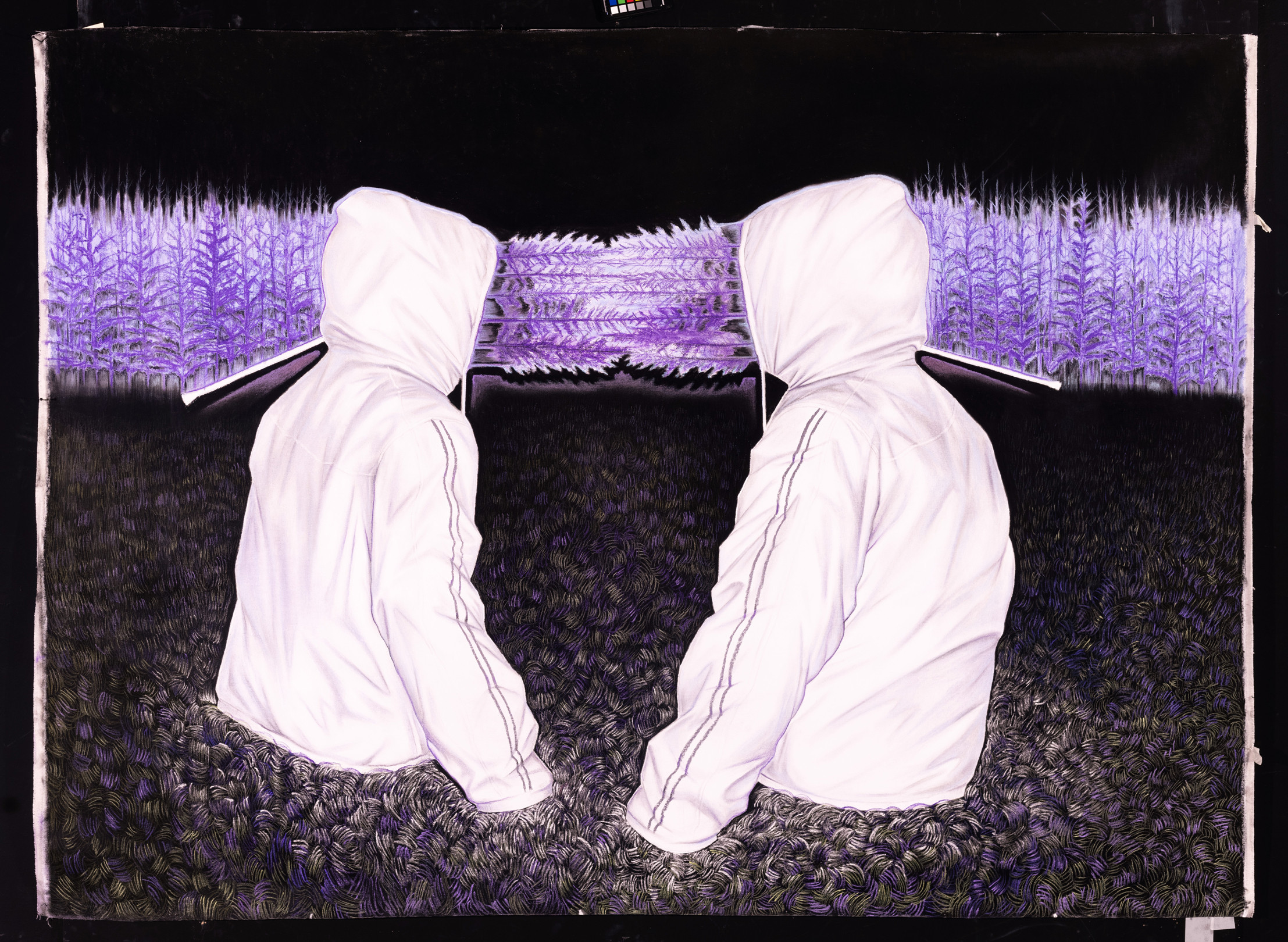Karolína Netolická↓
Gallery
Studies
| 2016–2022 | Drawing, AVU (Jiří Petrbok) |
| 2013–2016 | Vyšší odborná škola uměleckoprůmyslová, Praha |
About the work
Merging
In my dry pastel drawings, I focus on the relation between man and nature, which I most often reflect through the human or animal body. I veil the narrative component that dominates my paintings in the scenic atmosphere of darkness. Darkness is one of the essential construction elements of my compositions. I conceive it not only as a background which can reveal a certain problem, but also as a chance at the birth of light, through which the problem can surface only subsequently. I outline the problems that arise between man and nature at the moment when dialogue turns into monologue; when one side ceases to view the other as “YOU,” but merely as the impersonal “IT.” I symbolically portray the alienation between the human and the non-human via the products of the contemporary period of overproduction. I intensify the gradation of this condition by depicting red-and-white barrier bands, the basic function of which is to divide, to result in two opposite sides that, however, have a common border. I perceive that border as the only consensus in their conflict or otherness.
I present human beings as constantly groping blind people, as nomads migrating from one place to place, eternally seeking but never finding. They become strangers who experience existential sense of loneliness in their own world. Man in my paintings is not only alienated from nature, but also to man, and therefore to himself. Although in many cases I may seem to portray a person as part of a group, he is still alone and separated from it. Each group member thus becomes a separate, closed component, immersed in its own individuality. It stares blindly, with no eyes in the face, which has the character of a white uniform mask set in today’s liquid world that in my opinion is strongly plastic. I compare this world to an inflatable bouncing castle, which serves for programmed institutional entertainment lacking silence, mystery, and contemplation. This world basically has no boundaries; everything can change its form. Information can be arbitrarily inflated or deflated and it is impossible to take a stand from any distance fixed point.
Without this hindsight, the creatures inhabiting this world are incapable to capture the risks around them. They are in danger of merging with the risks that become invisible to them due to their inability to de-reflex. The moment of this merging also plays a crucial role in my current work. I try to view this issue through a social and ecological prism, taking my own perception and experience into account. My canvases consider the fact that there is a very thin line between risk, crisis, and disaster, and that this line can be easily, often unknowingly, crossed. I try to capture the moment when invisible risks turn into a crisis that has the potential to result in a radical situation or catastrophe.
Let me exemplify this issue by my painting Laocoön and His Sons. I portray Laocoön without mouth, because he tried to inform the positivist society about a looming danger, and hence some negative condition that may occur. His intention was punished: he was deprived of his speech as a tool of giving a potential testimony. Laocoön is then attacked by snakes having chemical formulas of toxic substances on their bodies. He is blind to the risk of these chemical, radioactive snakes, as the patterns on their skin are merely an abstract language of scientism to him. The danger has been encrypted, it cannot be captured by the senses, and its impact can only be felt retrospectively – when it is too late. Laocoön thus merges, becomes one with the invisible risk, and the state of emergency turns into a state that is permanent.

